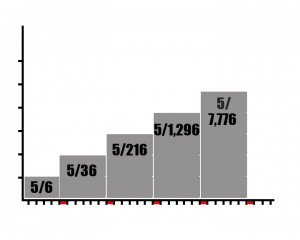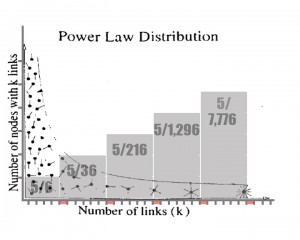Here are ALL of the readings for the course. Keep in mind that the “x readings” denotes the class by which the readings should be completed. For example, the week 1.2 readings should be completed by week 1.2, etc.
1.2 Readings
Key Readings:
Smith, M. K. (2001) ‘Chris Argyris: theories of action, double-loop learning and organizational learning’, the encyclopedia of informal education, www.infed.org/thinkers/argyris.htm. Last update: May 29, 2012. (PDF copy)
Miles, Adrian. “Blogs in Media Education: A Beginning.” Australian Screen Ed 41 (2006): 66–9. Print. (http://vogmae.net.au/vlog/research/network-literacies/blogs-in-media-education/) (PDF copy)
Bonus Reading:
Mason, John. Researching Your Own Practice: The Discipline of Noticing. London: Routledge, 2002. Print. (PDF copy)
2.1 Readings
Key Readings:
Bosch, Torie. “Sci-Fi Writer Bruce Sterling Explains the Intriguing New Concept of Design Fiction.” Slate. Web. 29 July 2013. (PDF)
Ward,, Matthew. “Design Fiction as Pedagogic Practice.” Medium. Web. 29 July 2013. (PDF)
Bonus Readings:
Grand, Simon, and Martin Wiedmer. “Design Fiction: A Method Toolbox for Design Research in a Complex World.” Proceedings of the Design Research Society Conference. 2010. (PDF)
KNUTZ, EVA, THOMAS MARKUSSEN, and POUL RIND CHRISTENSEN. “The Role of Fiction in Experiments Within Design, Art & Architecture.” n. pag. Print. (PDF)
Week 2.2
Key Readings:
Bush, Vannevar. “As We May Think.” The Atlantic July 1945. The Atlantic. Web. 19 July 2013. (LINK)
Nelson, Theodor Holm. Literary Machines 91.1: The Report on, and of, Project Xanadu Concerning Word Processing, Electronic Publishing, Hypertext, Thinkertoys, Tomorrow’s Intellectual Revolution, And Certain Other Topics Including Knowledge, Education and Freedom. Sausalito: Mindful Press, 1992. Print. (Apologies for the strange scan, the scanner freaked out a bit – PDF)
Bonus Reading:
Weinberger, David. Small Pieces Loosely Joined: A Unified Theory of the Web. New York: Perseus Books, 2002. Print. (PDF)
Week 3.1
Key Readings:
Landow, George. Hypertext 3.0: Critical Theory and New Media in an Era of Globalization. Baltimore: The Johns Hopkins University Press, 2006. Print. (extracts, PDF)
Bolter, Jay David. Writing Space: The Computer, Hypertext, and the History of Writing. Hillsdale (N.J.): Lawrence Erlbaum Associates, 1991. Print. (extract, PDF)
Bonus Readings:
Graham, Paul. “The Age of the Essay.” Paul Graham. Sept. 2004. Web. 11 Aug. 2013. (PDF)
Week 3.2
Key Readings:
Extracts from Landow, George. Hypertext 3.0: Critical Theory and New Media in an Era of Globalization. Baltimore: The Johns Hopkins University Press, 2006. Print. (PDF)
Extract from Douglas, J. Yellowlees. The End of Books — Or Books Without End?: Reading Interactive Narratives. Ann Arbor: University of Michigan Press, 2000. Print. (PDF)
Bonus Readings:
Extract from Douglas, J. Yellowlees. The End of Books — Or Books Without End?: Reading Interactive Narratives. Ann Arbor: University of Michigan Press, 2000. Print. (PDF)
Extract from Ryan, Marie-Laure. Avatars of Story. Minneapolis: University of Minnesota Press, 2006. Open WorldCat. Web. 15 Aug. 2013. (PDF)
Week 4.1
Key Readings:
Watts, Duncan J. Six Degrees: The Science of a Connected Age. London: Vintage, 2003. Print. (Extract, PDF)
Anderson, Chris. “The Long Tail.” Wired. Oct. 2004. Web. 23 Aug. 2013. (PDF)
Week 4.2
Key Readings:
Barabási, Albert-László. “The 80/20 Rule”. Linked: How Everything Is Connected to Everything Else and What It Means for Business, Science, and Everyday Life. New York, NY: A plume book, 2003. Print. (PDF)
Barabási, Albert-László. “Rich Get Richer”. Linked: How Everything Is Connected to Everything Else and What It Means for Business, Science, and Everyday Life. New York, NY: A plume book, 2003. Print. (PDF)
Bonus Readings:
Barabási, Albert-László. Extracts Linked: How Everything Is Connected to Everything Else and What It Means for Business, Science, and Everyday Life. New York, NY: A plume book, 2003. Print. (PDF)
Week 5.1
Key Readings:
Murphie, Andrew, and John Potts. Culture and Technology. New York: Palgrave Macmillan, 2003. Print. This is the introduction from this book. Short, very general but lays out some important general ideas and terms. (PDF)
Galloway, Alexander R. Protocol: How Control Exists after Decentralization. The MIT Press, 2006. Print. (PDF).
Bonus Readings:
Murphie, Andrew, and John Potts. Culture and Technology. New York: Palgrave Macmillan, 2003. Print. “Theoretical Frameworks” (PDF)
Week 5.2
Key Readings:
Manovich, Lev. “Database as Symbolic Form”. Database Aesthetics: Art in the Age of Information Overflow. Vesna, Victoria, ed. Minneapolis: University Of Minnesota Press, 2007. Print. 39-60. (PDF)
Bonus Readings:
Seaman, Bill. “Recombinant Poetics and Related Database Aesthetics”. Database Aesthetics: Art in the Age of Information Overflow. Vesna, Victoria, ed. Minneapolis: University Of Minnesota Press, 2007. Print. 121-140. (PDF)
Week 6.1
Key Reading:
Schultz, Pit. Latour, Bruno: On Actor Network Theory: A Few Clarifications 1/2. 11 Jan. 1998. E-mail. (PDF)
Week 6.2
Key Readings:
Dietz, Steve. “Ten Dreams of Technology.” Leonardo 35.5 (2002): 509–522. MIT Press Journals. Web. 7 Oct. 2013. (PDF)

